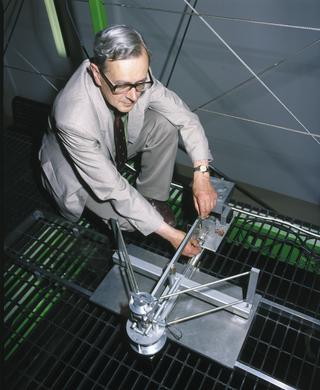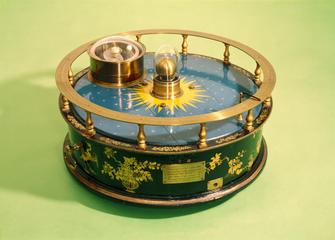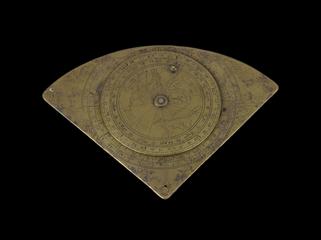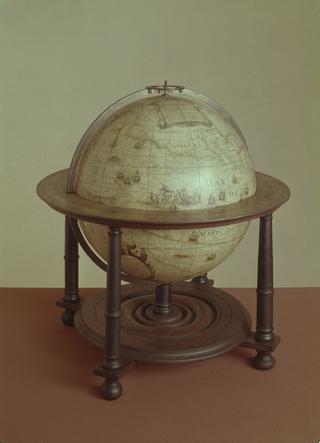

Astronomical circles, or armillary astrolabe by Pierre Sevin, Paris and dated 1661. The astrolabe plate has a Gemma Frisius universal projection with pointer on one side while on the reverse there is a shadow dial with unequal scale and a sighting vane. One sight missing, cleaned and laquered by Chief Attendant W.E. Page 29/7/27. He made and added a small brass key piece which was missing
Dated 1661, this armillary astrolabe was made by Pierre Sevin, Paris and is mounted in armillary rings that allow worldwide use. The astrolabe is in essence a model of the heavens that an astronomer could hold in their hands. Popular in Medieval and Renaissance Europe, its many uses included timekeeping, astrology and surveying. The two dimensional depiction of the universe on this instrument is achieved using universal projection rather than the stereographic technique more usually found on astrolabes. From its origins in the Ancient World, Islamic astronomers developed the astrolabe from where it spread to Europe.
Details
- Category:
- Astronomy
- Object Number:
- 1895-31
- Materials:
- brass and incomplete
- Measurements:
-
overall (open): 150 x 102 mm
- type:
- armillary astrolabe
- credit:
- Weishaupt and Co.




